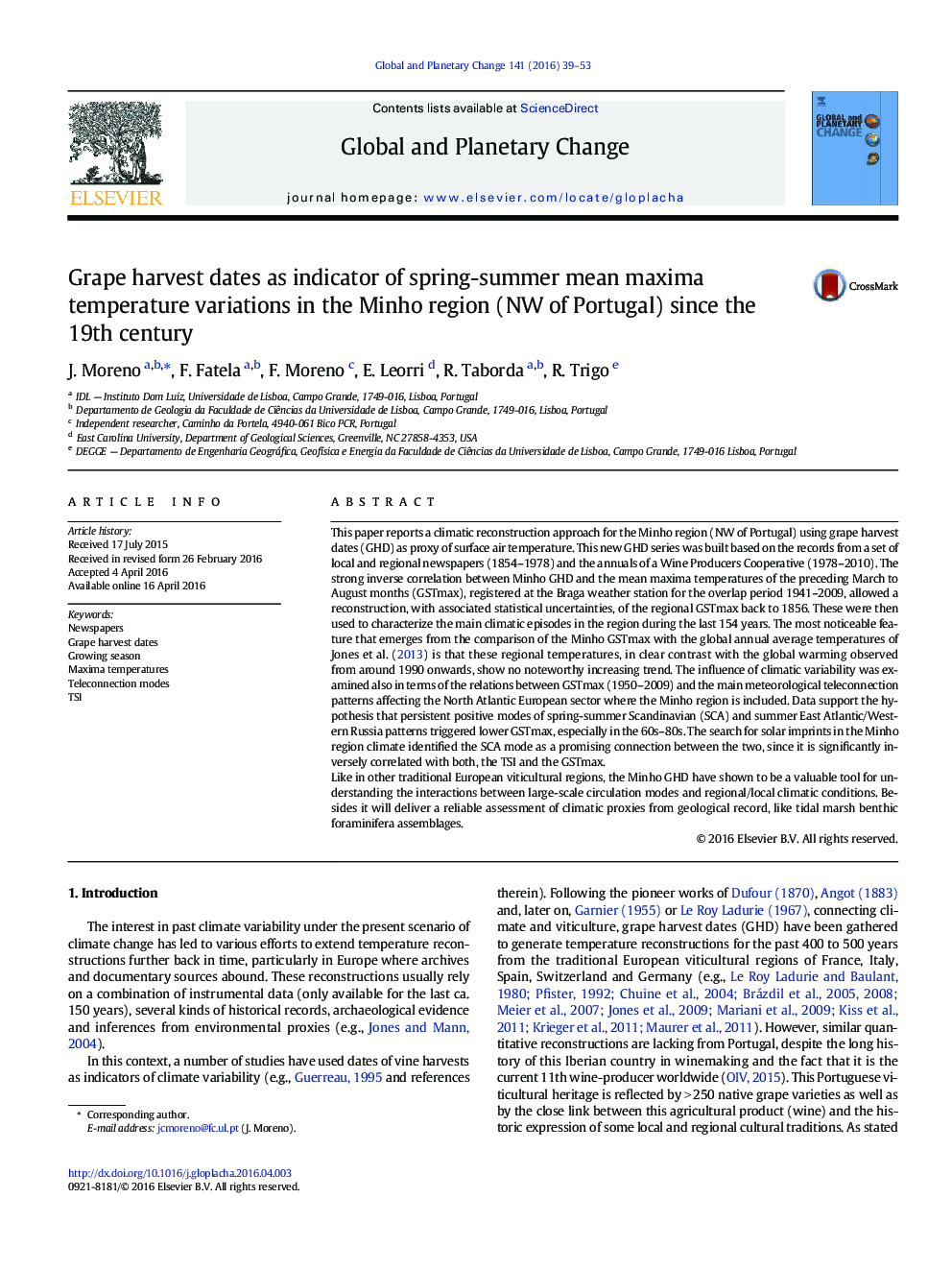| Article ID | Journal | Published Year | Pages | File Type |
|---|---|---|---|---|
| 4463317 | Global and Planetary Change | 2016 | 15 Pages |
•A grape harvest dates series was built after 34,200 newspapers and recent annuals.•A reconstruction of growing season maxima temperatures back to 1856 was achieved.•Relations between maxima temperatures and teleconnection patterns were analysed.•A solar forcing signal (TSI) in maxima temperatures was highlighted via SCA index.
This paper reports a climatic reconstruction approach for the Minho region (NW of Portugal) using grape harvest dates (GHD) as proxy of surface air temperature. This new GHD series was built based on the records from a set of local and regional newspapers (1854–1978) and the annuals of a Wine Producers Cooperative (1978–2010). The strong inverse correlation between Minho GHD and the mean maxima temperatures of the preceding March to August months (GSTmax), registered at the Braga weather station for the overlap period 1941–2009, allowed a reconstruction, with associated statistical uncertainties, of the regional GSTmax back to 1856. These were then used to characterize the main climatic episodes in the region during the last 154 years. The most noticeable feature that emerges from the comparison of the Minho GSTmax with the global annual average temperatures of Jones et al. (2013) is that these regional temperatures, in clear contrast with the global warming observed from around 1990 onwards, show no noteworthy increasing trend. The influence of climatic variability was examined also in terms of the relations between GSTmax (1950–2009) and the main meteorological teleconnection patterns affecting the North Atlantic European sector where the Minho region is included. Data support the hypothesis that persistent positive modes of spring-summer Scandinavian (SCA) and summer East Atlantic/Western Russia patterns triggered lower GSTmax, especially in the 60s–80s. The search for solar imprints in the Minho region climate identified the SCA mode as a promising connection between the two, since it is significantly inversely correlated with both, the TSI and the GSTmax.Like in other traditional European viticultural regions, the Minho GHD have shown to be a valuable tool for understanding the interactions between large-scale circulation modes and regional/local climatic conditions. Besides it will deliver a reliable assessment of climatic proxies from geological record, like tidal marsh benthic foraminifera assemblages.
